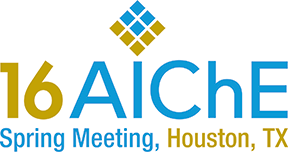

Procedures form an important part of the industry 's operational architecture and are part of the system to ensure that prescribed methods are routinely followed, allowing for optimal and safe performance of the facility. The study by the Bullemer et al. (2004) has raised concerns over effectiveness of the current state of the art in procedures, with significant incidents being attributed to issues in procedures and deviations from procedures. An example of a process safety incident attributed to procedural deviation is the Texas City refinery explosion of 2005 where deviation from standard operating procedures were amongst the root causes for the incident. This report by the Chemical Safety and Hazard Investigation board (2007) pointed out that the outdated and ineffective procedures, combined with poor compliance and execution were major contributing factors to the accident. The objective of the Advanced Procedures research effort is to create tools that improve procedure design. The first tool under development is a writer's guide. The goal of the writer’s guide is to provide procedure writers with guidelines based on peer-reviewed scientific literature on how to write procedures in a way that leads to maximum safety performance and regulatory compliance. Also, the presentation of procedures should be user friendly and accessible. The current study focuses primarily on operating procedures, along with start-up, shut down and emergency procedure design.
Our method involves various steps. First, a sample of regulations and standards, along with existing procedure writing guidelines was selected from across the world. Second, a thorough analysis of the human performance implications, obtained through systematic categorization of the regulations and guidelines was performed. Third, these human performance implications were expanded by using existing empirical evidence to form guidelines for procedure writing. Fourth, to further involve the stakeholders, mainly the operators; field observations and interviews were conducted in several sites in various geographies to understand the perceptions and requirements necessitated by the users (e.g., operators). These observations and field interviews would be presented and used to give an insight towards procedure usage in process facilities. Fifth, on the basis of these contextual interviews, a survey was developed for wider distribution to reach operators and other personnel, to obtain a more representative picture of the requirements of procedure users. The results and findings obtained from the interviews and surveys will be used to update the procedure writer’s guideline document in an ongoing effort to reflect the needs of multiple industries. By ensuring that best practices in process safety and human performance are incorporated, the work presented here provides an insight into the state of the art in current procedure writing practices and what is needed to ultimately improve safety performance.
